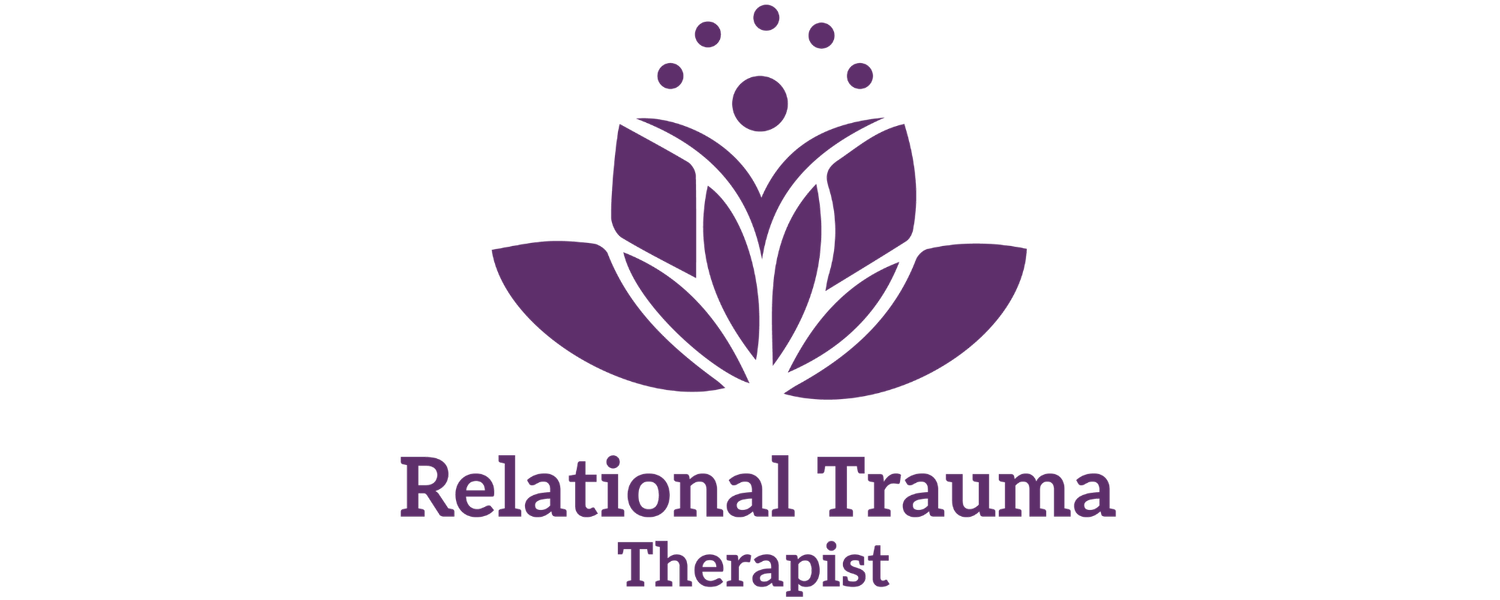Recognizing Trauma Responses & Healing Strategies
Trauma can leave deep marks that don’t always show. These wounds influence how we react, feel, think, and relate to others. Recognizing your trauma response patterns is the first step toward healing. Whether you're dealing with childhood sexual trauma, narcissistic abuse, or the effects of generational trauma, it's possible to regain control of your life.
Identifying Your Personal Trauma Response Patterns
Everyone responds to trauma differently, but there are common patterns. Some people freeze. Others fight, flee, or fawn. These are called survival responses and often become automatic behaviors.
Fight responses may look like irritability, anger, or control-seeking.
Flight responses often involve overworking, anxiety, or restlessness.
Freeze responses include dissociation, feeling stuck, or shutdown.
Fawn responses are people-pleasing, codependency, or self-abandonment.
If you experienced childhood sexual abuse and trauma, you might still carry those defense mechanisms into adulthood. This can show up as hypervigilance, trouble trusting others, or avoiding intimacy. Sexual trauma symptoms can also include shame, guilt, and flashbacks.
Understanding generational trauma and abuse is also important. Many people carry behavioral patterns that are rooted in family history. These may include chronic anxiety, emotional suppression, or repeating unhealthy relationship cycles.
PTSD vs Complex PTSD: Key Differences
Post-Traumatic Stress Disorder (PTSD) usually results from a single traumatic event. It includes symptoms like flashbacks, nightmares, avoidance, and a heightened startle response. PTSD from narcissistic abuse or sexual assault trauma can be overwhelming, but it typically follows a clear cause.
Complex PTSD (C-PTSD), on the other hand, often develops after prolonged trauma, especially in childhood. This includes childhood sexual trauma in adults, covert narcissistic abuse, or generational abuse. In addition to PTSD symptoms, C-PTSD includes:
Emotional dysregulation
Negative self-beliefs
Difficulty with relationships
Dissociation and numbing
Cognitive processing therapy (CPT) and EMDR for sexual trauma are proven treatments for both PTSD and C-PTSD. These therapies help reprocess traumatic memories and reduce their emotional charge.
Research by Orla T. Muldoon, S. Alexander Haslam, Catherine Haslam, Tegan Cruwys, Michelle Kearns, and Jolanda Jetten shows that between 30% and 80% of trauma survivors report some degree of post-traumatic growth (PTG), with outcomes strongly influenced by social identity factors. People who maintain or develop valued group connections after trauma—such as community, family, or ideological affiliations—tend to experience fewer post-traumatic stress symptoms and higher resilience. For example, in a study of 3,000 individuals exposed to political violence in Northern Ireland, those with a stronger national identity were significantly less likely to meet PTSD criteria, highlighting how belonging and shared meaning can buffer distress and foster recovery.
Trauma Responses in Relationships
Narcissistic abuse often triggers trauma responses in relationships. Victims may stay silent, walk on eggshells, or avoid conflict. They may also experience symptoms of narcissistic abuse, like confusion, low self-worth, or isolation. These patterns, like silence, people-pleasing, and hypervigilance, are often fawn or freeze trauma responses rooted in relational trauma.
The narcissist abuse cycle often follows this pattern:
Idealization
Devaluation
Discard
Hoovering
Understanding the abuse cycle of a narcissist helps you recognize patterns and break the cycle of generational trauma. Healing starts with awareness and boundaries. If you need support, a narcissistic abuse therapist or a narcissistic abuse support group can help.
Actionable Steps to Manage Triggers and Heal
Healing trauma is not about forgetting what happened. It’s about learning to respond differently. These steps can help you move forward:
1. Name Your Triggers
Triggers are reminders of past trauma. They can be sounds, smells, situations, or even words. Notice when you feel a sudden rush of fear, anger, or shutdown. That’s a clue that a trauma response is active.
Cognitive behavioral therapy (CBT) is effective for identifying and managing triggers. It teaches you to challenge unhelpful thoughts and create healthier patterns. Cognitive behavioral therapy for anxiety is helpful when triggers lead to panic or worry.
2. Use Grounding Techniques
Grounding brings you back to the present. Some exercises include:
5-4-3-2-1 (naming senses)
Cold water on your hands
Counting objects in the room
Deep belly breathing
These techniques help regulate your nervous system and reduce trauma-related stress.
3. Explore Therapy Options
Healing from trauma requires support. Consider these therapeutic approaches:
Cognitive behavioral therapy for structured thinking changes
Cognitive processing therapy for PTSD reframes traumatic thoughts
EMDR for reprocessing disturbing memories
Trauma-focused cognitive behavioral therapy (TF-CBT) for children and teens
Somatic experiencing for body-based healing
Dialectical behavior therapy (DBT) for emotional regulation
Emotion-focused therapy for relational trauma
A trauma-informed therapist or sexual trauma therapist can guide you through these treatments. If you’re dealing with childhood sexual trauma, it’s vital to work with someone experienced in this area.
4. Understand the 4 Stages of Trauma Recovery
The 4 stages of trauma recovery are:
Stabilization – Creating safety and self-regulation
Remembrance – Processing trauma memories
Reconnection – Rebuilding relationships and trust
Empowerment – Reclaiming life and identity
This path isn’t linear. You may revisit earlier stages. A trauma therapist or trauma recovery coach can help you navigate these steps.
5. Break Generational Patterns
Generational trauma symptoms often go unnoticed until we repeat them. You may find yourself in the same relationships, reacting the same way your parents did.
To break the cycle of generational trauma, try:
Talking about family history
Identifying inherited beliefs and behaviors
Seeking family therapy for generational trauma
Journaling and reflection
Understanding the intergenerational transmission of trauma brings clarity. You may recognize that historical trauma and types of generational trauma have impacted your family for years. You can choose something different.
6. Focus on Daily Healing Practices
Healing happens day by day. Consider adding these practices to your routine:
Journaling your thoughts and triggers
Practicing mindfulness or yoga
Reading a cognitive behavioral therapy workbook
Using cognitive processing therapy worksheets
Creating a daily routine for safety and stability
If you’re healing from male sexual trauma conditioning, hypersexuality trauma, or emotional trauma, self-compassion and consistency matter.
7. Connect With a Support System
Don’t go through this alone. Find a narcissistic abuse support group, talk to a relationship trauma therapist, or reach out to a therapist specializing in trauma.
Support reduces isolation and shame. It also offers perspective when you feel stuck. Trauma recovery coaching and peer support can be powerful tools for long-term growth.
Why Therapy Matters in Trauma Healing
Working with the best trauma therapist or using resources like a cognitive behavioral therapy workbook can help you:
Reduce triggers
Rebuild self-esteem
Understand your trauma
Practice self-regulation
Therapy provides a safe space to work through your trauma responses and replace them with healthier coping skills. For couples, the significance of cognitive behavioral therapy for couples lies in healing communication and building trust.
Trauma and the Body
Trauma is stored not just in the mind, but in the body. Survivors of sexual assault and trauma often experience chronic pain, digestive issues, or fatigue. Hypervigilance, restlessness, and chronic stress are common.
Body-based therapies like somatic experiencing, breathing exercises, and relaxation methods support regulation. These methods help restore balance to the nervous system, especially when talk therapy isn't enough.
Recognizing Trauma in Children
Children who experience trauma often show it in their behavior. Signs may include:
Nightmares
Withdrawal
Aggression
Trouble concentrating
Cognitive behavioral therapy for kids and trauma-informed care at school and home can make a big difference. If your child is affected, finding a childhood trauma therapist can help.
Trauma, Addiction, and Coping
Unhealed trauma often leads to coping mechanisms like substance use. Trauma and addiction recovery go hand in hand. Understanding your past can reduce the need to escape your present.
Cognitive-behavioral therapy or trauma cognitive behavioral therapy can help you address both the trauma and the behavior. Healing happens when we face the pain instead of avoiding it.
Empowering Your Healing Journey
Healing doesn’t mean forgetting. It means creating new responses. You don’t have to stay in cycles of fear, shame, or silence.
With the right tools, support, and self-awareness, you can heal. Whether you're seeking cognitive behavioral therapy worksheets, trauma therapists, or looking to recover from narcissistic abuse, the path forward is real.
Start by understanding your trauma responses. Use daily practices to stay grounded. Reach out for therapy and support. And remember, your healing is not just for you. It’s for every generation that comes after.
If you're looking for help, you’re not alone. Therapists, coaches, and communities are available to support you. Healing is possible.
FAQs
What are common trauma responses?
Common trauma responses include fight, flight, freeze, or fawn reactions. Recognizing these trauma responses helps individuals understand how their body and mind respond to distress, creating a foundation for healing.
How do I recognize my trauma responses?
You can recognize trauma responses by paying attention to recurring emotional or physical reactions such as anxiety, numbness, people-pleasing, or avoidance. Awareness is the first step in your trauma healing journey.
What are grounding techniques for trauma recovery?
Grounding techniques for trauma recovery, like deep breathing, mindfulness, or sensory awareness, help reconnect you to the present moment and reduce the intensity of trauma responses.
How long does trauma recovery take?
Trauma recovery is a personal process; some people see progress in months, while others may need years. Healing depends on the type of trauma, support systems, and therapeutic consistency.
Why is it important to recognize trauma responses before healing?
Recognizing trauma responses allows you to separate survival patterns from your authentic self. This awareness makes your trauma recovery process more intentional and effective.


